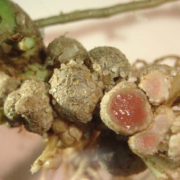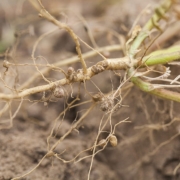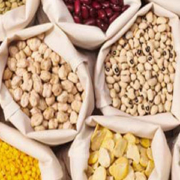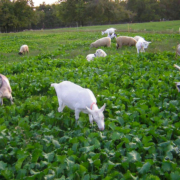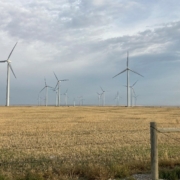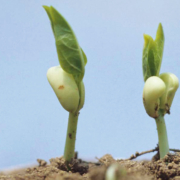How to Make Sure Your Leguminous Cover Crop is Doing its Job
 Print This Post
Print This Post
By Emilie Saunders, NCAT Communications Director
Legumes are a superstar cover crop, particularly in warm, subtropical climates because unlike other cover crops, legumes have the ability to turn atmospheric nitrogen into nitrogen that crops can use. But as Stephanie Kasper, a biology research associate at University of Texas at Rio Grande Valley explains in Voices from the Field Episode 205: Inoculating Legume Cover Crops, legumes require an important partner to do their job.
“The legumes don’t do nitrogen fixation on their own,” says Kasper, “they do it in partnership with a soil bacterium called rhizobia. Each legume species has a different bacterial partner that works with it to do nitrogen fixation.”
As Kasper explains to National Center for Appropriate Technology Sustainable Agriculture Specialist Colin Mitchell, the legume root has to meet up with the right rhizobia underground. When they find each other, nodules or bumps start to form on the plant roots. It’s these little bumps that create the environment for nitrogen fixation.
“The plant is providing sugar, the food and water that the bacteria need to live. In exchange, those bacteria are taking atmospheric nitrogen and turning into plant-available nitrogen and feeding it to the plant,” Kasper explains. “When that works as it should – when you cut into one of those nodules on the legume root, it should be bright pink inside.”
This underground dance doesn’t always occur effectively. In fact, you may see a lush, green cover crop above ground but those roots might not hold any of the critical nitrogen-producing nodules. Listen to Voices from the Field Episode 205: Inoculating Legume Cover Crops to learn more about what to look for in a healthy leguminous cover crop.
Related Resources:
Cover Crop Options for Hot and Humid Areas
Blog 65. The Two Best Legume Cover Crops for Hot and Humid Climates
This blog is produced by the National Center for Appropriate Technology through the ATTRA Sustainable Agriculture program, under a cooperative agreement with USDA Rural Development. ATTRA.NCAT.ORG.

